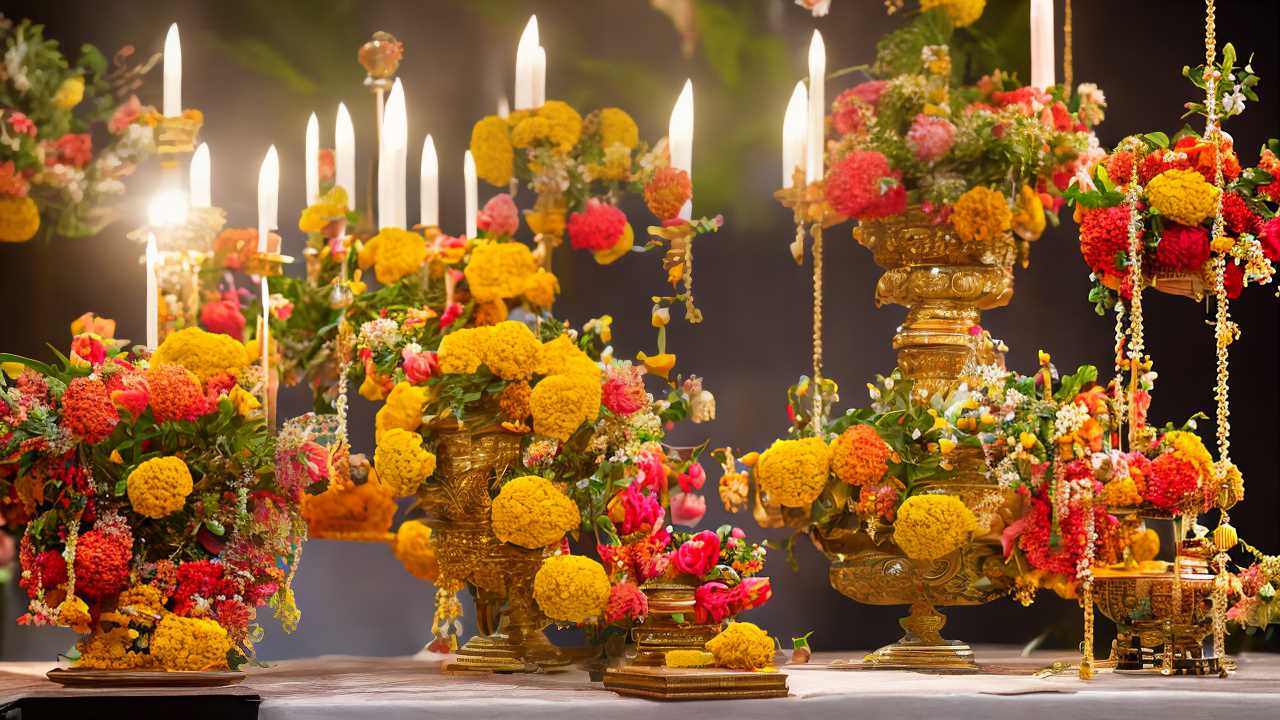Navratri, the nine-night festival dedicated to Goddess Durga, is one of the most significant and vibrant festivals celebrated across India. Navratri Puja in Bangalore takes on a unique charm, with the city’s cosmopolitan nature blending traditional practices with modern influences. The festival of Navratri, which usually falls in the months of September or October, is a time for spiritual renewal, cultural expressions, and community celebrations. For nine days, the city is enveloped in a myriad of religious rituals, dance forms, music, and festivities that highlight both the devotion and the cultural diversity of its people.
The Spiritual Essence of Navratri Puja
At the core of Navratri lies the worship of Goddess Durga, who is revered in various forms and manifestations across different regions of India. The word ‘Navratri’ itself is derived from ‘Nav’ meaning nine and ‘Ratri’ meaning night, which together symbolize the nine nights of devotion. The festival is a time for devotees to seek the blessings of the Goddess to remove obstacles, purify the soul, and receive strength, wisdom, and prosperity.
In Bangalore, temples are beautifully decorated, and special pujas (rituals) are held for devotees who come to offer their prayers with utmost reverence. The rituals are conducted with a blend of traditional practices, where devotees invoke the Goddess Durga and her various incarnations like Lakshmi (Goddess of wealth), Saraswati (Goddess of knowledge), and Kali (Goddess of destruction).
The first three days of Navratri are dedicated to worshiping Goddess Durga, the next three to Goddess Lakshmi, and the final three to Goddess Saraswati. On the tenth day, known as Dussehra, the victory of good over evil is celebrated, symbolized by Goddess Durga’s triumph over the demon Mahishasura.
Temples and Puja Rituals in Bangalore
Bangalore is home to several prominent temples where Navratri Puja is observed with great devotion. The famous Bull Temple in Basavanagudi, the Sri Chamarajendra Park Temple, and the Malleswaram temples are some of the key places where devotees gather to perform rituals. These temples are adorned with flowers, lights, and offerings during the festival.
One of the most important rituals during Navratri is the Ghatasthapana, the installation of the sacred kalash (water pot), symbolizing the arrival of the Goddess. The kalash is decorated with mango leaves, a coconut on top, and filled with water. It is placed in a sacred space, usually near an altar or in the temple courtyard, where the devotees offer prayers every day.
Every evening, temples organize Aarti and Bhajans—devotional songs and hymns sung in praise of the Goddess. The melodious sounds echo through the streets, spreading an aura of divinity and spirituality across the city. The community also engages in Akhand Jyoti, the continuous lighting of a lamp, which burns throughout the nine nights as a symbol of eternal devotion.
The Enthralling Spirit of Dandiya and Garba
While the spiritual essence of Navratri remains central, Bangalore also showcases the vibrant cultural aspect of the festival. The city has a large number of Gujaratis, Marwaris, and other communities who bring their own customs to the celebration, including the famous Dandiya and Garba dances.
Garba, a traditional dance form originating from Gujarat, involves rhythmic clapping, intricate footwork, and circular movements around the deity, usually performed to lively music with devotional songs. Dandiya, which is also associated with the Garba, involves dancing with colorful sticks (dandiyas) in a circular formation. These dances symbolize the victory of good over evil and are often performed in the evenings after the worship rituals.
In Bangalore, many cultural organizations and community groups organize large-scale Garba events during Navratri. These events bring people from all walks of life together, creating an atmosphere of unity and celebration. Some of the most popular venues for Dandiya and Garba nights are in places like Whitefield, Indiranagar, Koramangala, and Jayanagar, where thousands of people gather to participate in this energetic and joyful dance.
The vibrant attire worn during these dance performances adds another layer of color to the festivities. Women wear traditional sarees, lehengas, or chaniya cholis in bright, eye-catching colors, while men dress in kurtas, dhotis, and bandhis. The overall vibe during these nights is one of fun, enthusiasm, and celebration of life, with each person contributing their energy and joy to the collective experience.
Community and Social Bonding
Navratri Puja in Bangalore is not just about the religious rituals or cultural performances; it’s also a time for community bonding and social interaction. Many residents take the opportunity to visit their friends and relatives, exchange sweets, and participate in community feasts. This spirit of camaraderie is especially evident during the Kolu (Golu) displays.
In homes across Bangalore, families set up beautiful Golu displays—arranging dolls and figurines in a tiered display. The dolls represent various deities, mythological stories, and scenes from daily life. Neighbors and friends visit each other’s homes to admire the Golu setups, share sweets, and exchange warm wishes. This practice strengthens the sense of community and brings people together.
Additionally, many charitable organizations in Bangalore organize special events during Navratri, such as free food distributions, health camps, and educational initiatives, embodying the spirit of giving and service that is an essential part of the festival.
Conclusion
Navratri Puja in Bangalore is a celebration that transcends religious boundaries, bringing together people from all backgrounds to partake in the joy, devotion, and unity that the festival offers. Whether it’s the reverent rituals at temples, the colorful Garba dances, the elaborate Golu displays, or the festive spirit that fills the city, Navratri is an occasion for every Bangalorean to celebrate life, faith, and culture.
As the city embraces both the spiritual and cultural aspects of Navratri, it serves as a reminder that despite the hustle and bustle of urban life, there’s always room for tradition, togetherness, and devotion. For nine nights and ten days, Bangalore is a city transformed—full of light, energy, and the harmonious blending of spirituality and celebration.

